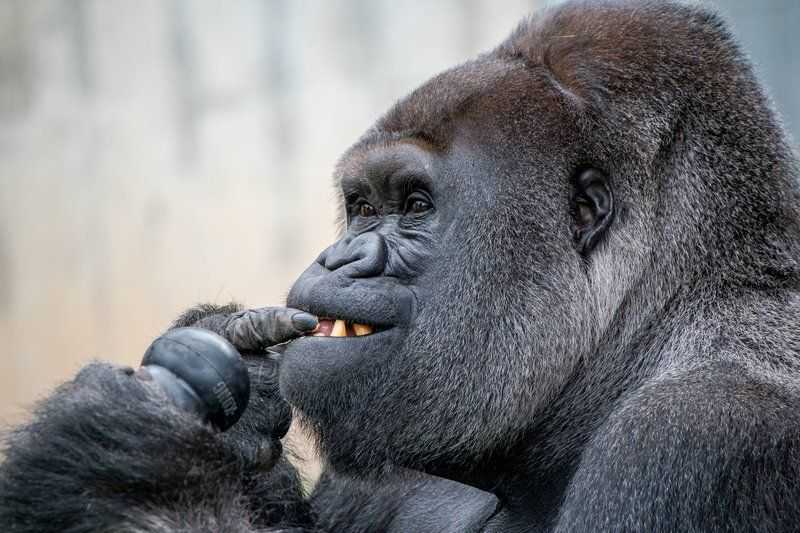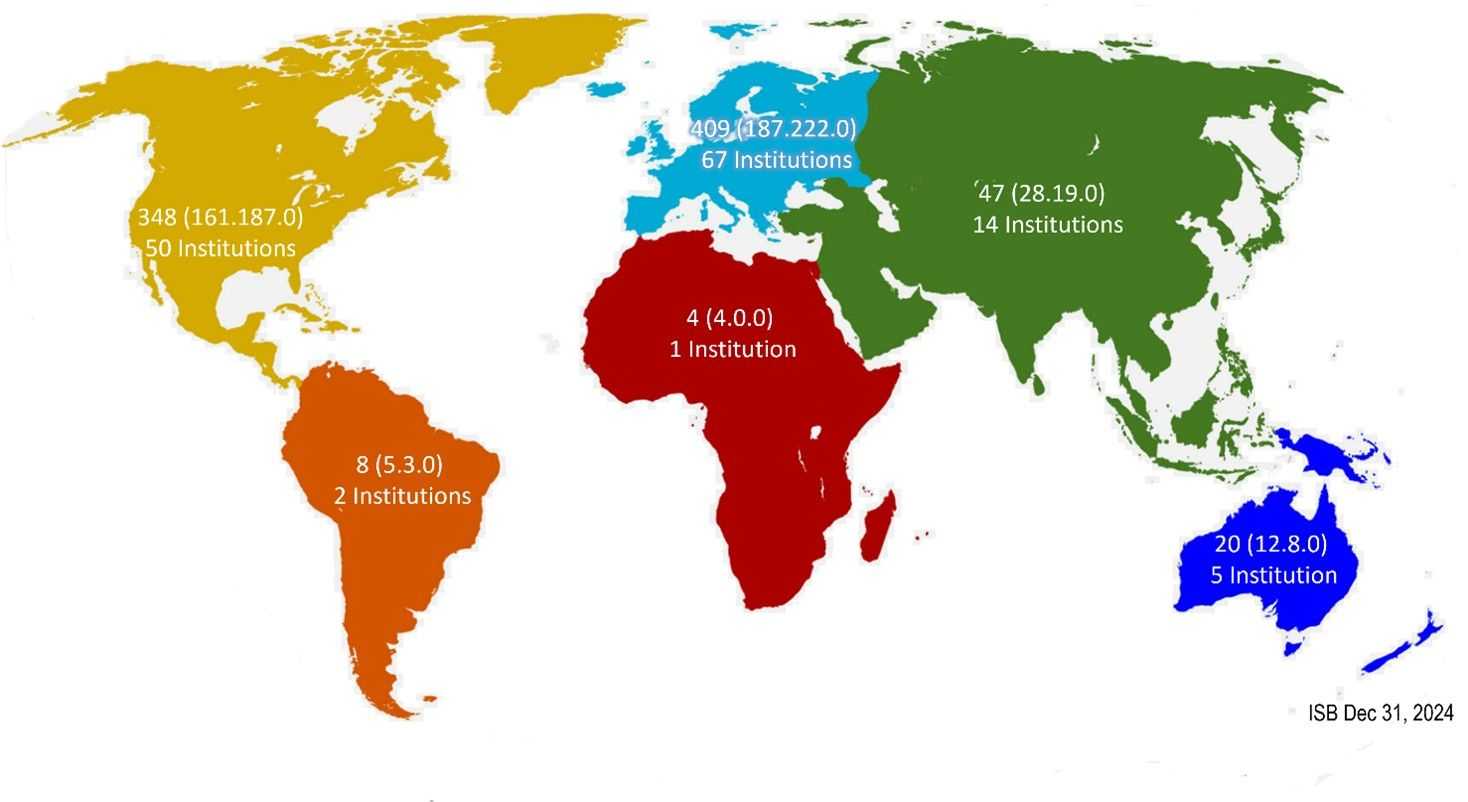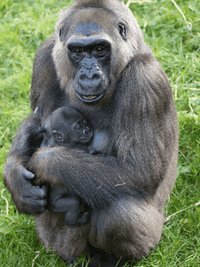Western lowland gorilla
(Gorilla gorilla gorilla)
EEP Coordinator: Tjerk ter Meulen, Artis Zoo
Vice coordinator: Sandra Reichler, � Tiergarten Heidelberg
EEP page - Western lowland gorilla
What are the EEP roles?

| Conservation education |
| Fundraising |
| Conservation research |
| Insurance |
| Education |
| Keeping gorillas in enclosures and social group compositions that meet the needs of the taxon and encourage behaviours typical for the species, provides an opportunity to engage the public with education and awareness about gorillas and conservation. The EEP is able to directly contribute to the conservation of the species by raising awareness of the need for sustainable consumption of specific goods at specific times (e.g. education on mobile phone recycling, and sustainable palm oil). Even though this contribution may be modest in the larger conservation strategy for gorillas, it is still thought to be significant. Raising awareness on gorillas and the threats to the species in the wild is furthermore thought to be crucial for the fundraising role. |
| The Great Ape TAG encourages EEP participants to carry out fundraising activities to support gorilla conservation. This includes contributing to funds for selected projects for Western lowland gorilla and/or for more threatened gorilla (sub)species. Even though the contribution of fundraising for the gorilla is relatively modest in the grand scheme of gorilla conservation (i.e. many multi-million-euro projects are place), this role is still deemed important considering the conservation status of gorillas. |
| The Great Ape TAG encourages gorilla holders to proactively contribute to research activities that provide a direct benefit to gorilla conservation and welfare. |
| The Great Ape TAG wants to work towards a sustainable ex situ population for the Western gorilla in EAZA. It is recommended that the EEP population functions as an insurance population, in case individuals or genetic variation ever needs to be reintroduced into the wild. This would require a genetically and demographically stable and behaviourally competent ex situ population that is actively managed. Even though reintroductions are generally thought to be challenging, the future is difficult to predict and in case of unforeseen catastrophes (e.g. a pandemic that affects gorillas), reintroductions may be needed. The current ex situ population is already quite large and genetically diverse, which means that managing the population as an insurance population is relatively easy. |
| The Great Ape TAG considers capacity building an important component of the EEP population, so relevant knowledge and expertise on gorilla husbandry and research can be shared with to those who can benefit from it in other regions, including ex situ programmes, facilities and rescue centres. High husbandry standards will not only be promoted in EAZA, but also in other regions, for any institution keeping gorillas. |

| Conservation education |
| Advocacy |
| Keeping gorillas in enclosures and social group compositions that meet the needs of the taxon and encourage behaviours typical for the species, provides an opportunity to engage the public with education and awareness about gorillas and conservation. For the indirect conservation education role, the gorilla can be used to convey broader conservation messages. As a charismatic and Critically Endangered species with which people can easily empathise, the gorilla has great potential for engaging visitors with strong conservation message and addressing their conscience. Many important messages could be relevant here, including encouraging behavioural change of consumers and putting pressures to companies, making people aware of certified ecotourism, etc. As such, this EEP is thought to be able to provide a considerable contribution to conservation. |
| Considering the status and charisma of the gorilla, the Great Ape TAG feels the EEP is well-suited to encourage lobbying activities using the gorilla as an umbrella species. The EEP has connections to the right people to identify topics for which lobbying is quickly needed to achieve a certain conservation outcome. |

| Biological education |
| Basic and applied research |
| Keeping gorillas in enclosures and social group compositions that meet the needs of the taxon and encourage behaviours typical for the species, provides an opportunity to engage the public with education and awareness about gorillas and conservation. For the non-conservation education role, the gorilla can be used to convey broader messages, such as general biological education and (re)connecting people to nature, for many reasons, including the species’ close relatedness (and differences) to humans. |
| The Great Ape TAG encourages gorilla holders to proactively contribute to research activities on gorilla husbandry and welfare, as well as on cognition, behaviour and morphology related to human evolution. Research contacts are already well-established and ongoing. |
EEP in numbers
In September 2025, the Western lowland gorilla EEP included:
- 409 animals
- in 67 institutions.

Programme highlights
There are a lot of recently published research articles available
- Cristina Mestres-Torres1, Maria Teresa Abelló Poveda2 and José Domingo Rodríguez-Teijeiro (2022): Morphological appearance and effects of castration on blackbackgorillas Gorilla gorilla gorilla in the EAZA ex-situ populationJournal of Zoo and Aquarium Research 10(1) 2022
- Létang B., Mulot B., Alerte V., Bionda T., Britton L., ter Meulen T., Szánthó J., Guéry J.P., Sueur C. (2021): Social proximities of developing gorilla males (Gorilla gorilla gorilla) in European zoos: The consequences of castration and social composition. Applied Animal Behaviour Science 234: 105175. doi:10.1016/j.applanim.2020.105175
- Jan Vermeer and Lieven Devreese (2015): Birth sex ratio, infant mortality and rearing type in captive western lowland gorillas Journal of Zoo and Aquarium Research 3(1) 2015
- The international Studbook (ISB) is managed by Sabrina Linn (Zoo Frankfurt). The map shows the distribution of gorillas across various regions.






